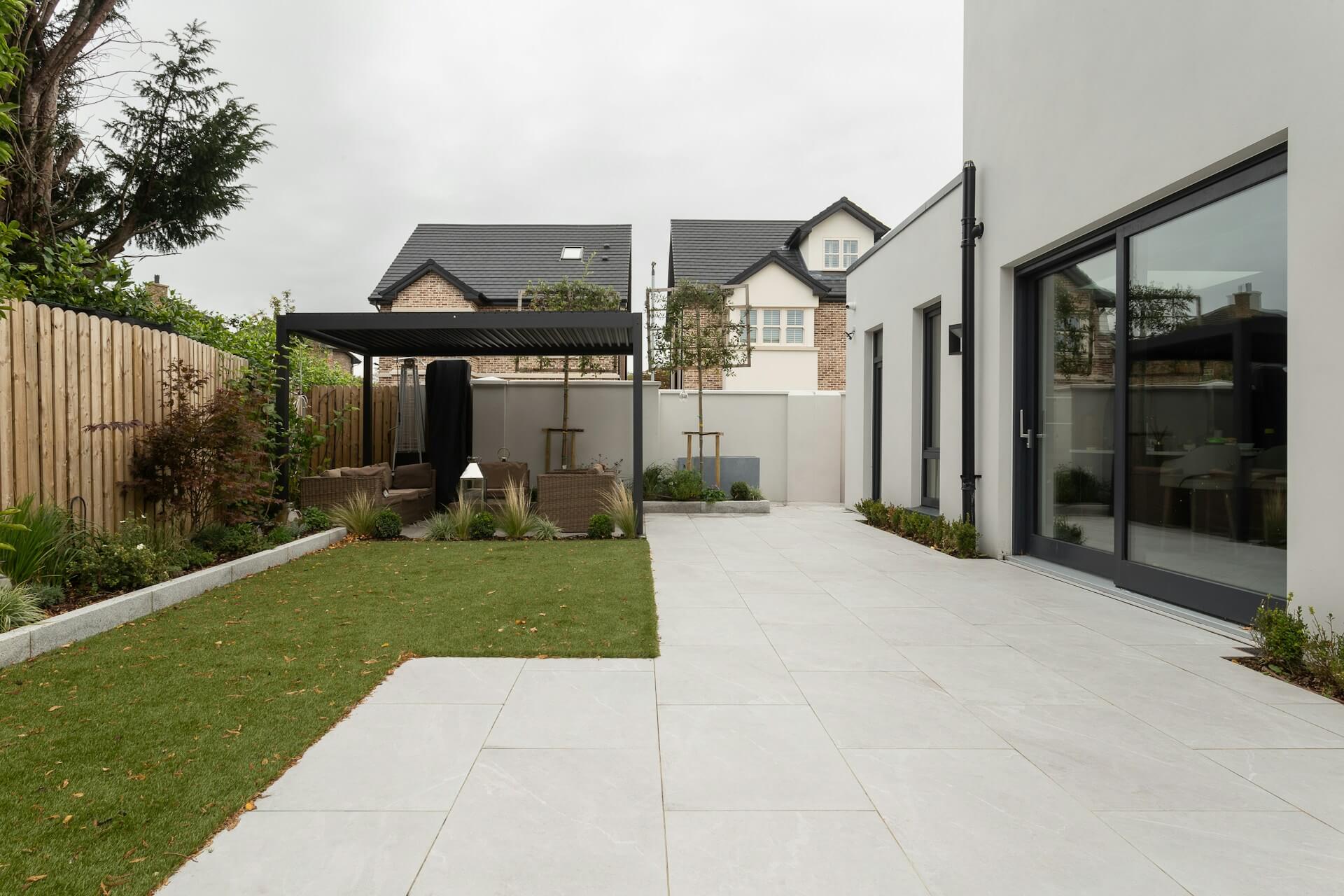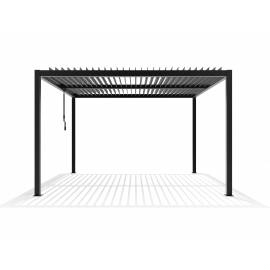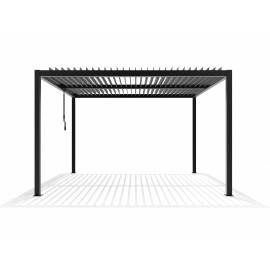Creating an enticing and welcoming outdoor space is the goal of virtually every home and business owner. Providing shade, offering a great view, and adorning the space with outdoor furniture are all integral parts of creating an appealing outdoor space.
Sadly, outdoor furniture can rot or get damaged without proper protection, providing shade isn’t always simple, and curating the view for your family and guests takes considerable effort. This is why outdoor structures like pergolas and gazebos are necessary to create the ideal outdoor space on your property.
Sadly, however, homeowners often mix up the two, and if you are among those who wonder what exactly is the difference between pergolas and gazebos, this article is for you. We’ll go over both structures, their distinguishing characteristics, and which one might be more suitable for your home.
Table of Contents
What Is a Pergola?
Pergolas are vertical outdoor structures with open roofs that provide partial shading and protection from the elements. Pergolas are often not independent structures; rather, they are add-ons attached to a patio, garden space, or balcony.
What Is a Gazebo?
Gazebos, on the other hand, are independent garden structures with a solid roof. They often feature a pavilion or octagonal design that is a holdover from the Chinese structures that initially inspired the design in the West. Modern gazebos are often small structures in home gardens made from either wood or aluminium. Tho they are also commonly featured in public gardens as well.
What Are the Key Differences Between Pergolas and Gazebos?
While pergolas and gazebos are both outdoor structures typically placed in gardens, they fundamentally differ in their design, function, aesthetics, and cost:
- The design of the structures
Pergolas are open structures with no exterior walls, giving residents a full view of the garden and only providing partial shade. This open design allows for large gatherings and the use of family-sized garden furniture, making pergolas an excellent way to create a space for family gatherings or garden parties.
Gazebos, on the other hand, while often being open, free-standing structures, feature a solid roof and offer complete shade to the space. Instead of independent pillars supporting the structure, as is the case with pergolas, building materials are used to create a central, relatively enclosed space.
- The function of the structures
The function of a pergola is decorative in nature while providing partial shading. It is meant to offer a large space for family gatherings while being capable of providing adequate protection for garden furniture, creating an excellent outdoor living space.
Gazebos, on the other hand, are freestanding structures that act as a complement to a garden setting by providing a place from which to view the garden. Outdoor furniture is rarely used in gazebos; meanwhile, it is even possible to set up a hot tub under a pergola.
- The aesthetics of the structures
Pergolas are relatively recent innovations, and this is reflected in their aesthetics. Featuring minimalistic designs and open spaces, pergolas are unobtrusive open-air structures that complement modern architecture well.
Gazebos, dating back to ancient Egypt, feature a round, enclosed roof and built-in flooring. They are often the focal point of traditional gardens, providing a better vantage point from a central location.
- The cost of the structures
Pergolas are generally cheaper. At Sunlux, for example, you can find pergolas for as low as £ 1,290. Meanwhile, Gazebos generally cost a minimum of £ 3,000 and can cost upwards of more than £ 6,000.
The disparity in cost between the two is largely due to the construction materials and labour needed to install a gazebo, which almost always also requires a building permit. Meanwhile, garden pergolas require relatively little effort to design and erect.
Other products in category: Pergolas
£1241.67 tax excl.
Other products in category: Pergolas
£1458.33 tax excl.
Is a Gazebo or a Pergola Right for My Property?
Deciding which outdoor structure is right for your property depends on both your needs and budget. Here’s a general outline of what each structure offers:
If You Are Looking for Affordability and Practicality: Pergolas Are the Answer
Pergolas are both cheaper and more practical. They might not be eye-catching structures, but pergolas offer adequate shelter, a window into the natural surroundings, and a long-lasting entertainment space that is excellent for outdoor dining and gatherings. The spacious, open-ended structure gives you freedom to design the space however you want, add whichever garden furniture you like, and adorn your outdoor area however you want. A pergola might not be flashy, but it provides you with a solid foundation to transform your garden however you want.
If You Are Looking to Add Visual Interest to Your Garden: Gazebos Are an Excellent Choice
Thanks to its unique, fully enclosed roof structure, gazebos stand out and offer a unique visual flair to any garden or property. They are elegant and small, designed for more intimate moments, and provide superior protection from averse weather conditions. Being substantially costlier than pergolas, they can be hard to justify for property owners with an eye on their budget, but if cost isn’t a factor, they can be an excellent addition to your garden.
Conclusion
Both gazebos and pergolas are garden buildings designed to help you create your ideal outdoor living space. Both structures have their strengths and weaknesses. Traditional gazebos have adorned properties from the era of Egyptian garden plans to today, meanwhile pergolas are a prominent feature of many modern and luxury properties. Understanding the differences between the two is key to figuring out which one is right for your property.
Gazebos vs Pergolas FAQ
Do Pergolas Provide Adequate Weather Protection?
Pergolas often only offer partial shade and protection from wind. This is especially true of well-built pergolas that are sturdy enough to withstand even the strongest storms. That’s enough to create a comfortable environment for you and your family. Not only that, but the main structure of the pergola can be fitted with waterproof covers that will protect the space from rain and snow, making it usable year-round.
Are Pergolas and Gazebos Prohibitively Expensive?
The cost of pergolas and gazebos largely depends on the size, architecture, and complexity of the structure. How large the space is, the materials used to construct the support pillars, the architecture and engineering that goes into designing the canopies and gazeboes all fundamentally impact how much the structure costs.
The installation costs can’t be neglected either. Sometimes, building permits are required to make the structural changes necessary to install a pergola’s slatted roof or a pop-up gazebo near the exterior of a garden. This is why we encourage our clients to get in touch with us directly.
Are Pergolas Suitable for Traditional Gardens?
By and large, pergolas have a modern, minimalistic look to them, while gazebos are far more traditional structures, which has resulted in the impression that pergolas are not suitable for more traditional gardens.
This is not strictly true, however. Pergolas come in many different styles and sizes, and by picking the correct product and making the right adjustments, you can easily make a pergola feel natural in a traditional garden setting.


